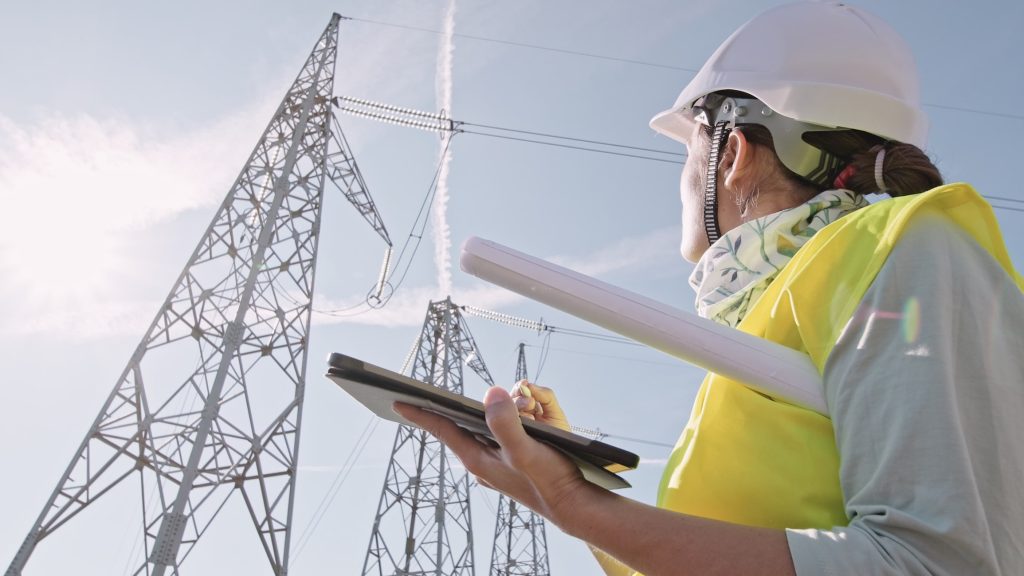Streamline IT, lower costs, and improve decision making on grid management, regulatory compliance and more
Utilities struggle with asset data, which impacts every aspect of their business. Market priorities like grid modernization, decarbonization and increased energy demand only compound the problem of poor data quality. And it doesn’t stop with operations. Eighty percent of utility companies point to inaccurate data as a cause for poor customer experience.
Yet data quality issues remain even as companies invest heavily in IT. Why? Because many utilities operate with multiple siloed systems in the back office, as well as a myriad of independent apps in the field.
This overly complex technology environment causes data redundancy, inaccuracy and latency. Field crews use their mobile solutions less often because they don’t improve job performance, only hinder it. Office staff and senior executives trust their application data less as updates take a long time to move from the field to back-office systems of record.
Utilities need accurate, complete and timely asset data to fuel operational systems and inform field workflows via a unified application experience. This improves all aspects of the utility business, from engineering to operations to customer service.
Related Services

IT Complexity Costs Money and Degrades Data
Bad data leads to bad outcomes for utilities. Trying to develop microgrids, manage vegetation around circuits, monitor a decentralized grid and continue providing affordable service becomes more complicated when making decisions using untrustworthy data.
As utilities face increased energy demand, companies have deployed enterprise applications such as SAP’s enterprise resource planning (ERP), including SAP work and asset management (WAM), and Esri’s ArcGIS to improve asset management and predictive maintenance using data and analytics.
However, quality data, particularly asset data, remains hard to come by. Large utilities with service territories spanning thousands of miles, servicing millions of customers, must manage enormous IT infrastructure and related datasets to keep the networks running.
When companies maintain one data management environment for SAP ERP software and another for Esri ArcGIS, it becomes a challenge to share information between the two systems.

Consolidate Systems for Improved Data Quality
Solving the asset data quality issue starts at the enterprise IT level. Across the country, most utilities employ both Esri software and SAP software.
By implementing TRC’s Lemur mobile GIS application, combined with SAP S/4HANA and Esri ArcGIS software, utilities can consolidate systems and streamline IT for improved data quality.
Companies no longer must pay to build and maintain additional custom technology to support data exchange between multiple systems and related apps. They can reduce the technical debt and resource drain created by extract, transform and load (ETL) software and custom data translations. Utilities can move away from antiquated data access methods like ETL.
Deploying Lemur and integrating SAP and Esri via S/4HANA empowers users to meet business rules efficiently, diminishing the opportunity for data redundancy and error. It also improves regulatory compliance since each new regulation can require utilities to update their WAM and GIS data.
The benefits include:
- Simplified IT, integrated systems of record
- Reduction in the use of ETLs
- Lower operation and maintenance costs
- Timely, accurate and complete data
- Increased safety and reliability
The Benefits of Native Mobile Apps for Field Crews
The Lemur application ensures field workers feed consolidated systems of record with quality data by working seamlessly with Esri ArcGIS mapping and SAP work management apps.
It’s designed to be “no-code” configurable to address any mobile use case, from vegetation management to pole replacement and everything in between. Field technicians using Lemur gain synchronized access to data from both the ERP and GIS asset systems of record. When they edit ERP or GIS data in Lemur, those edits are captured and recorded in both systems of record.
Lemur removes the need to deploy multiple use-case-specific field applications, each with its own data repository, that must be synchronized to the asset system of record. This leads to expensive, manual (archaic) and never-ending ETL processes that are meant to clean and synchronize asset data but, in reality, only cause data error and erosion.
Because Lemur and SAP apps are native, they combine to eliminate the need for separate data repositories that must be manually synced with systems of record.
A Unified Experience That Works Offline
Lemur provides functionality previously only accessible through separate applications. Lemur delivers a unified experience to capture, edit, view and share asset data from the field promptly and accurately using a single solution.
Lemur also offers an intuitive solution that requires minimal training. Field staff no longer use multiple independent point solutions for each mobile use case. They can do numerous tasks using a unified view.
In addition, Lemur mobile works in an “offline-first” environment, meaning the offline work experience is the same as online. Field crews are never without assets and mapping information. Instead, they use a single solution to manage and send data edits directly to the system of record and preserve data integrity in both connected and disconnected environments.
Lemur mobile application improves:
- Asset inspections and repair
- Pre-construction surveys
- As-built processes
- Emergency response
- Leak inspections
- Leak detection and management
- Vegetation management
- Field sketches
- Maintenance and repairs

TRC: Your Trusted Integration Partner
For companies looking to improve asset data quality and streamline their enterprise IT environment, TRC can help.
By teaming with TRC, utilities gain a trusted partner with experience integrating SAP and Esri. We understand how to connect Esri and SAP environments and extend GIS and WAM applications to the field, increasing field service productivity.
As the market-leading system integrator for SAP S/4HANA and Esri ArcGIS software, we have deployed enterprise solutions that eliminate disparate databases and reduce costs. Field staff and officer personnel gain real-time access and analysis of authoritative data that helps improve asset performance and reliability.
Customers benefit from having their ERP and GIS systems of record unified in a single, efficient data management environment. With the power of the Lemur enterprise application, TRC can provide a low-risk, cost-effective entry point for improving asset data quality using integrated native asset management apps.


